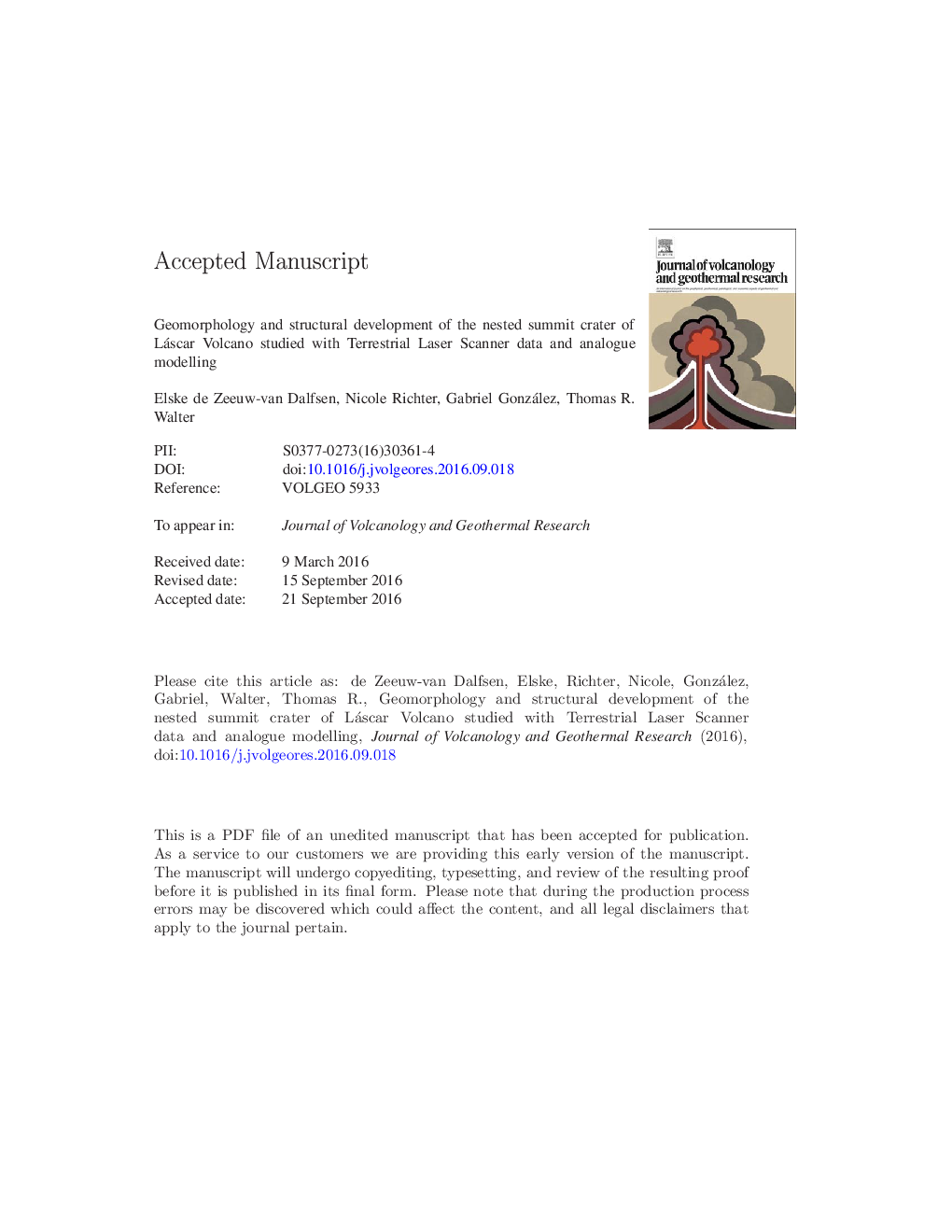| Article ID | Journal | Published Year | Pages | File Type |
|---|---|---|---|---|
| 5783738 | Journal of Volcanology and Geothermal Research | 2017 | 40 Pages |
Abstract
To create a robust dataset, Terrestrial Laser Scanner (TLS) data were collected at the summit of Láscar in 2013. The resulting topographic data set, consisting of more than 15 million data points with centimetre sampling, allows visualising almost the complete eastern edifice of the volcano's summit. From the TLS data, a Digital Elevation Model (DEM) and a slope map were generated allowing us to create a lineament map and quantify the observed morphological and structural features. To further improve our understanding of the processes responsible for the formation of the craters and geomorphology, we designed sandbox analogue models. Results suggest that one of the craters is a 'parasite' crater, formed as a consequence of ongoing activity in the adjacent crater. Our data suggest that the nested craters have all been modified since the last major eruption in 1993, by near surface effects associated with cooling, compaction and gravitational sliding of the crater floor infill. As the active crater deepens, the adjacent inactive crater extends and partially slumps towards the active one. Understanding the structural development of these nested craters is relevant for assessing potential future eruption sites, thus making Láscar a dynamic target for a detailed morphology study. These findings may similarly be applied to other volcanoes, where nested craters have developed.
Keywords
Related Topics
Physical Sciences and Engineering
Earth and Planetary Sciences
Geochemistry and Petrology
Authors
Elske de Zeeuw-van Dalfsen, Nicole Richter, Gabriel González, Thomas R. Walter,
